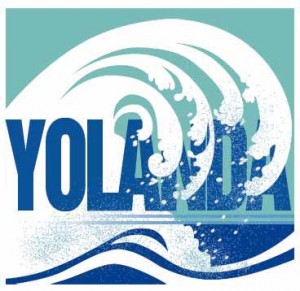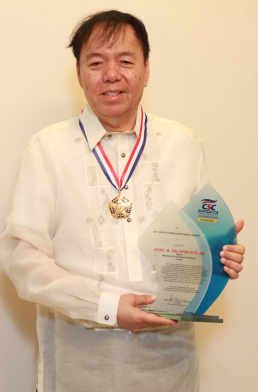Evacuees reject doles for lifetime
(Fifth of a series)

Grappling with that choice is not easy for 86 families that remain at the Isla Bonita evacuation center in Barangay (village) Silangan Uno, where more than 400 evacuees—considered the biggest number outside Eastern Visayas—are still sheltered.
Almost 900 kilometers from where they fled, the evacuees are torn between the pull of going home—where their houses still lie in ruins—and the present lure in this town of jobs and permanent housing offered by Rosario Mayor Jose M. Ricafrente Jr. and his corporate donors.
With offers of “cradle-to-grave” government assistance, Ricafrente promises to take good care of them.
Ricafrente’s generosity is not without basis.
Article continues after this advertisementWith its whopping P10-million monthly internal revenue allotment (IRA) from taxes paid by 300 companies doing business at the Cavite Export Processing Zone (CEPZ) here, Rosario—a first-class municipality (annual income more than P55 million)—can afford to provide for the evacuees.
Article continues after this advertisementFree to stay
“They are free to stay in Rosario, even for good if they want,” Ricafrente said, claiming that about a third of his 93,000 constituents have roots in Leyte and Samar.
Suspecting in private that there is a quid pro quo to Ricafrente’s generosity, some evacuees say they would rather have good jobs than remain on the dole for long.
“We need jobs, not dole,” said one of the evacuees, who spoke on condition of anonymity for fear of retribution from the mayor.
The evacuee also said that while they were grateful to Ricafrente, they were wary that their group would serve as a ready pool of voters for him during elections.
A two-term mayor of this town and one of the well-entrenched politicians in Cavite, Ricafrente was quick to dismiss the evacuees’ fears.
“The people of Rosario offered to help them because most of the evacuees have relatives here. That is all there is to it,” Ricafrente said.
“Being mostly fishermen themselves, they were drawn to our [rich] fishing grounds and the good jobs we offer. Some of them died here,” he added.
And the 59-percent employment rate here is proof that Rosario’s economic windfall is not only benefiting its residents but also its new visitors.
“We have found good jobs here that we can only dream about back in Tacloban,” said Rhodora Abeto, 45, president of Yolanda Evacuees Association.

Mayor Jose M. Ricafrente Jr. of Rosario, Cavite, offers “cradle-to-grave” government assistance to 400 evacuees, all victims of Super Typhoon “Yolanda.” PHOTO FROM WEB.CSC.GOV.PH
Abeto’s 25-year-old daughter, Ryzka Jane Tizon, got hired as a clerk at the Mount Sea Hotel in the town and her son-in-law, Norman Tizon, 26, found work as a call center agent at Convergys in Manila, 30 kilometers to the north.
Becoming productive
A former resident of Barangay Pikas in Sagkahan district in Tacloban City, housewife Abeto works closely with Ricafrente to train women at Isla Bonita to become productive by manufacturing rugs and doormats.
Three of the women who have benefited from the enterprise are Sally Reyes, Zenaida Pagaspas and Maricar Doblon. They augment their income from rug making by drying fish along the coast and selling their produce.
Earning P30 for every basket of fish they dry, the women make P300 to P400 every day.
“It’s not much, but we eat three meals a day,” said Reyes, a 30-year-old widow, describing the work that helped her make ends meet after typhoon relief stopped coming.
“We have jobs here that keep us busy,” said Doblon, 26. Her husband Albert, 28, found work as a laborer at Scad Services, a local subsidiary of a Japanese furniture company.
At Isla Bonita (Spanish for beautiful island), the three women have forged a close bond—even a sisterhood—from their shared experience of loss, tragedy and resilience.
Reyes lost her 24-year-old husband, JC Barsana, to the storm surges that killed more than 1,000 in their seaside village of Manlurip in San Jose, Tacloban, on Nov. 8 last year.
Doblon and Pagaspas lost eight relatives when killer waves struck Barangay Pasao in Guiuan, Eastern Samar province, on the same day.
Together with Abeto and her family, the three women were part of the mad exodus of survivors who fled Tacloban on overloaded C-130s and crammed buses in the wake of history’s strongest storm to hit land.
Alone and traumatized by the death of her husband, Reyes joined the mad dash out of Leyte’s wasteland by boarding a crowded bus in Tacloban a week after the storm. Six months pregnant then, Reyes ended up at Isla Bonita.
New life in Rosario
Reyes and 1,000 other evacuees answered the invitation of Ricafrente, who opened his town to the survivors.
Before townsfolk cleaned it up in the wake of Typhoon “Pedring” (international name: Nestat) in September 2011, Isla Bonita was a big garbage dump. Ricafrente converted it into a beach resort later. The Yolanda evacuees used the resort’s huts as temporary shelters.
The coastal town facing Manila Bay—known for its teeming fishponds and tinapang Salinas—is the tinapa (smoked fish) capital of Cavite. Salinas is the old name of Rosario. Old residents still call the town by that name. Rural Bank of Salinas still stands on General Trias Street.
But even with the threat and dire warnings of environmental disaster—the huge oil spill in August last year and the massive fish kill last September—the evacuees still prefer to live in Rosario than be confronted again with the uncertainties of life back in the old, blighted communities they left behind in Leyte and Samar.
In addition, the promise of a new life and a better tomorrow is making the decision to return home to Leyte and Samar less urgent now.
“For me and my baby, this is our home now,” said Reyes, a former sari-sari store owner.
Babies born
“They like it here. In fact, seven babies have been born here since they came,” said Nestor Llanosa, barangay captain of Silangan Uno, one of Rosario’s 20 villages.
Reyes gave birth to one of those babies—a bouncy boy—on Feb. 6. She named her baby John Yolsave, after her husband and the storm that killed him.
“Yolsave means he was saved after Yolanda,” Reyes said, suddenly excited at seeing her 8-month-old son wake up from a nap.
“Yolanda is now part of me and it will be until I die,” Reyes said, her dark eyes showing a hint of tears.
RELATED STORIES
Grateful ‘Yolanda’ evacuees leave Pasay shelter